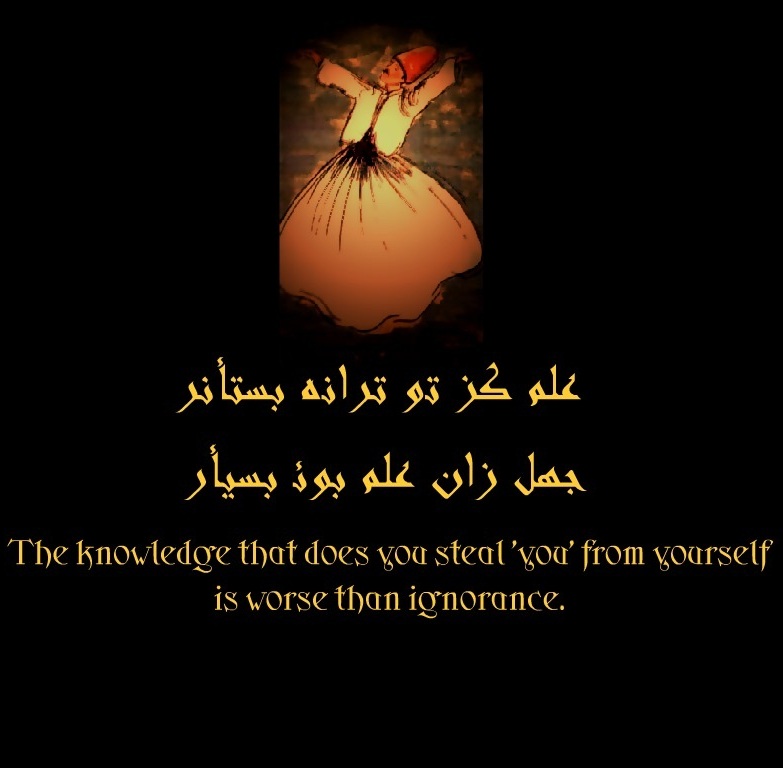 THE BEGINNINGS OF THE MODERN STUDY OF SUFISM lie in the colonial period (roughly 1750-1950), when many of the basic concepts and categories that govern our understanding of the term were first invented. Since the very concept of Sufism is hotly contested among both Muslims and non-Muslims today, it is important first of all to examine briefly the historical development of the European study of Sufism, in order to disentangle the issues underlying the current debate. The modern concept of Sufism emerged from a variety of European sources, including traveler’s accounts of exotic lands and Orientalist constructions of Sufism as a sect with a nebulous relation to Islam. When this picture of Sufism is compared with the internal documentation of Sufi tradition, a number of mismatches appear. Outsider terminology for Sufism stressed the exotic, the peculiar, and behaviour that diverges from modern European norms; in the context of colonialism, this terminology emphasized the dangers of fanatic resistance to European rule.
THE BEGINNINGS OF THE MODERN STUDY OF SUFISM lie in the colonial period (roughly 1750-1950), when many of the basic concepts and categories that govern our understanding of the term were first invented. Since the very concept of Sufism is hotly contested among both Muslims and non-Muslims today, it is important first of all to examine briefly the historical development of the European study of Sufism, in order to disentangle the issues underlying the current debate. The modern concept of Sufism emerged from a variety of European sources, including traveler’s accounts of exotic lands and Orientalist constructions of Sufism as a sect with a nebulous relation to Islam. When this picture of Sufism is compared with the internal documentation of Sufi tradition, a number of mismatches appear. Outsider terminology for Sufism stressed the exotic, the peculiar, and behaviour that diverges from modern European norms; in the context of colonialism, this terminology emphasized the dangers of fanatic resistance to European rule.
The two terms that best sum up early European attitudes to Sufism are fakir (Arabic faqir) and dervish(the Turkish pronunciation of Persian darvish). Both words mean more or less the same: faqir is the Arabic word for “poor man,” and dervish (probably derived from a term meaning “standing by the door”) is the Persian equivalent.
The term fakir has a more complicated history, because Persian-writing officials of the Mughal empire in India used the term to describe non-Muslm ascetics, such as yogis, along with Sufi ascetics and wayfarers. The British inherited this terminology when they conquered most of India, and in nineteenth-century English, fakir (or fakeer) was used almost exclusively for Hindu ascetics, whether of the organized monastic fraternities or those whom the Birtish described as “wandering rogues.” The accidental resemblance of the term to the English word faker seems to have encouraged the impression that these ascetics were all frauds and mountebanks.
In contrast to these outsider’s impressions, in their original contexts, both dervish andfakir
were terms that signified spiritual poverty, being poor in relation to God, and hence being dependent upon him. As in other religious traditions, poverty for the Sufis was a sign of turning away from the world and focusing on the divine reality. “Poverty is my pride,” the Prophet Muhammad is reported to have said. Yet the reports of travelers concerning the fakirs and dervishes of the East created a totally different portrait of bizarre behavior that was already a cultural icon over a century ago. Popular American songs of the nineteenth century refer to the dancing dervish as an image of wild and frantic activity. Magazine cartoons today still preserve the image of the fakir lying on a bed of nails. Traveler’s reports were based on fragmentary information, so that the fakir or dervish might sometimes appear to be a solitary figure but at other times was part of a strange brotherhood with peculiar rituals. To be sure, the negative portrait of the dervish had its analogues in some Muslim countries, such as Persia, where the rise of Shi’ism put organized Sufism into disrepute.
This text is an extract from the book by CARL W. PHD ERNST,







